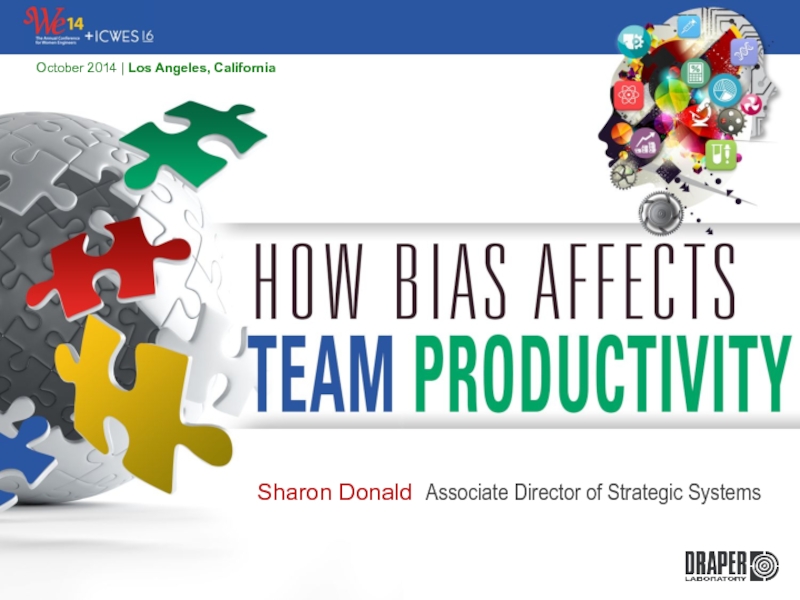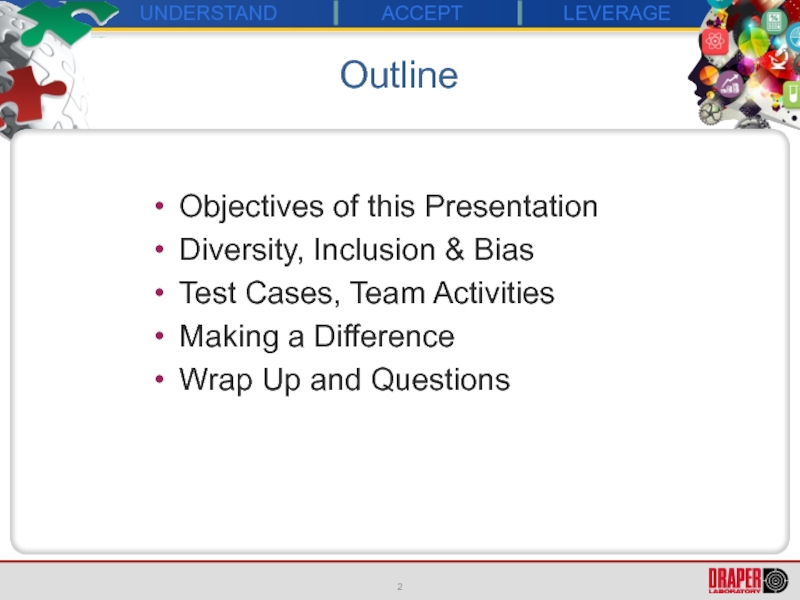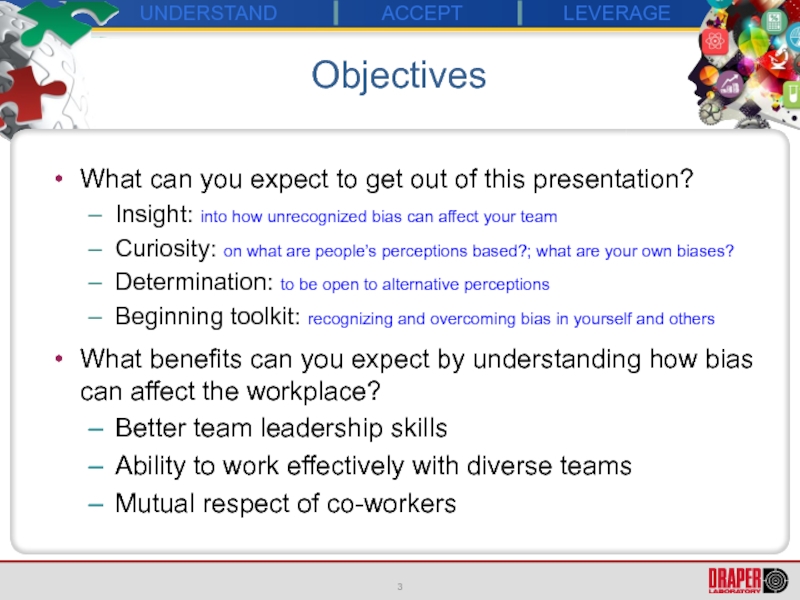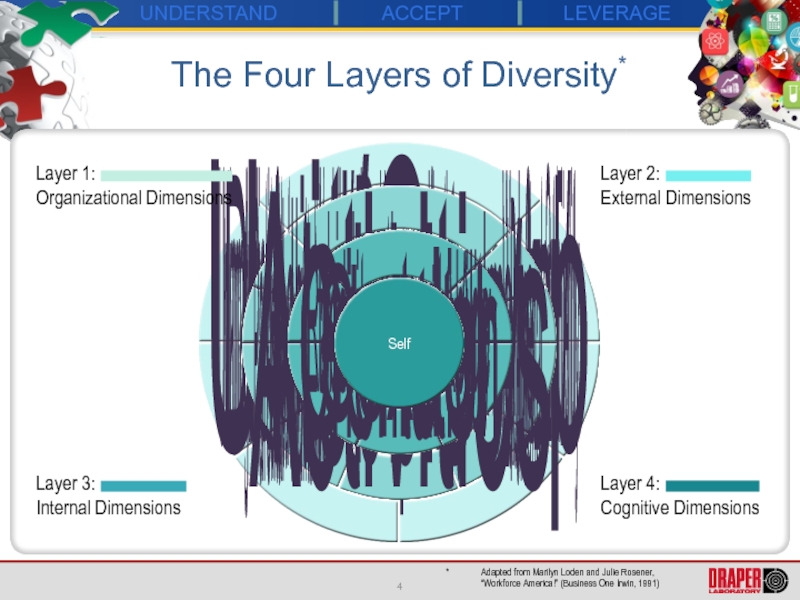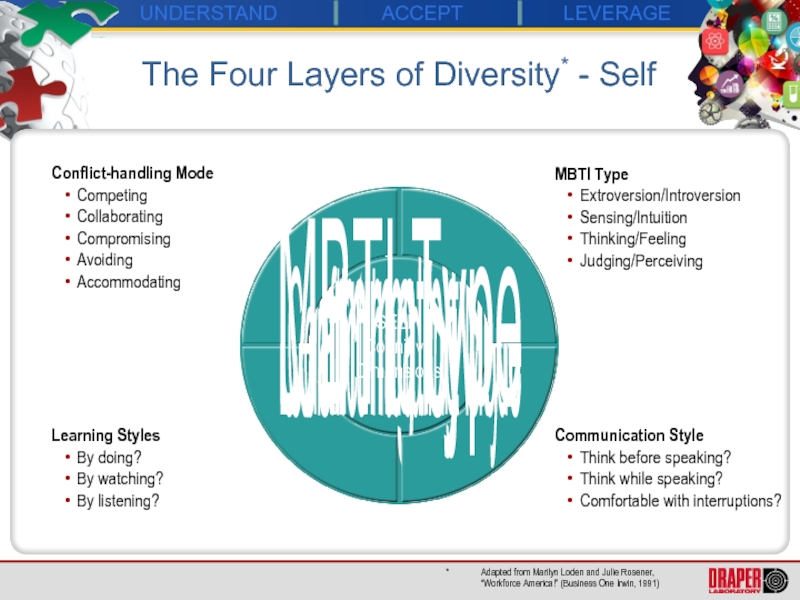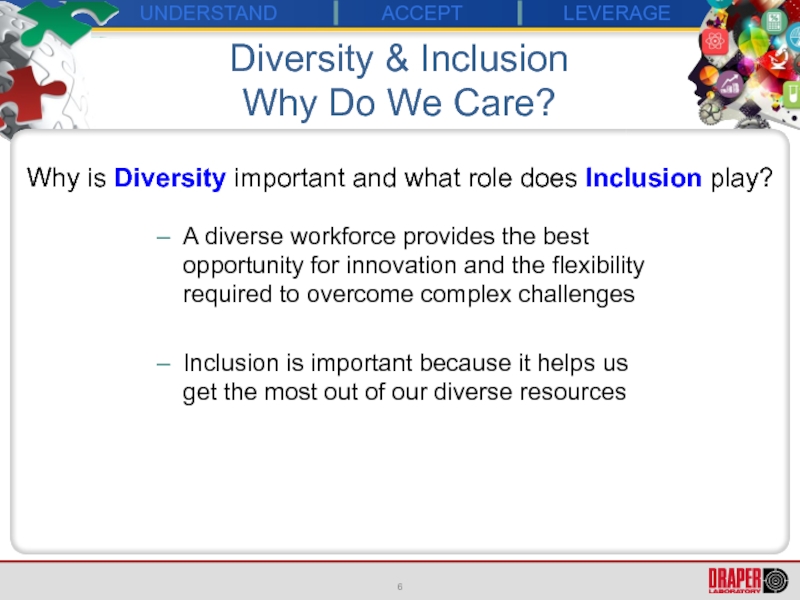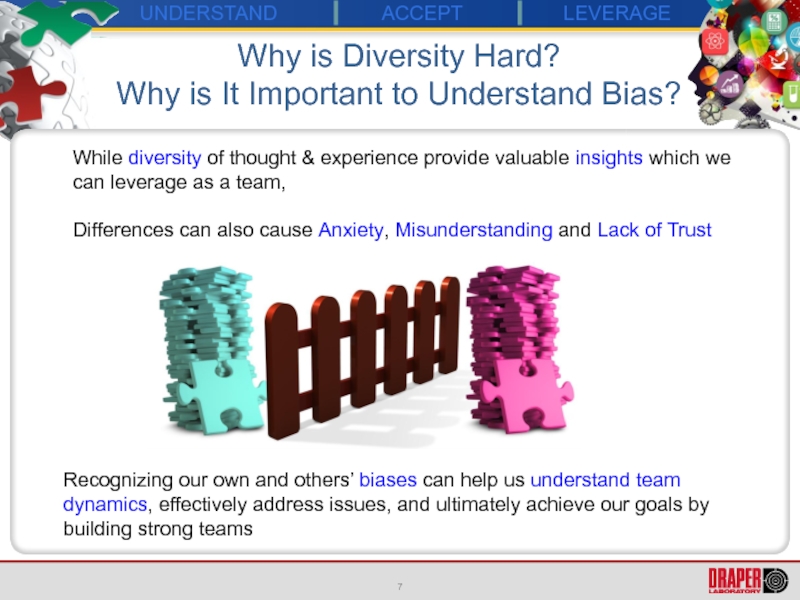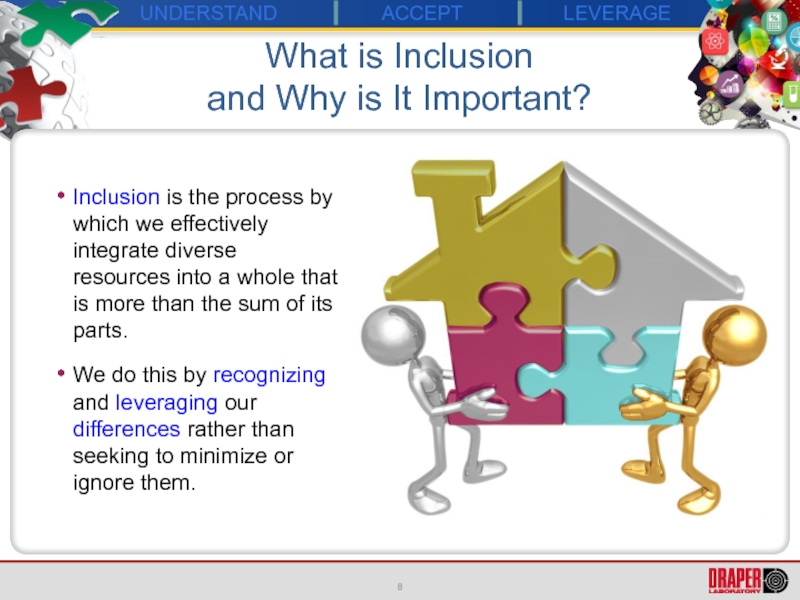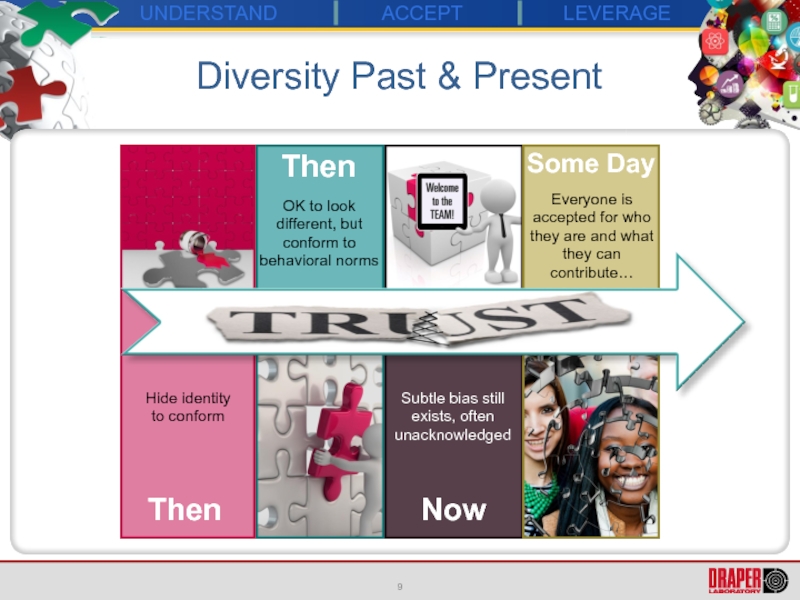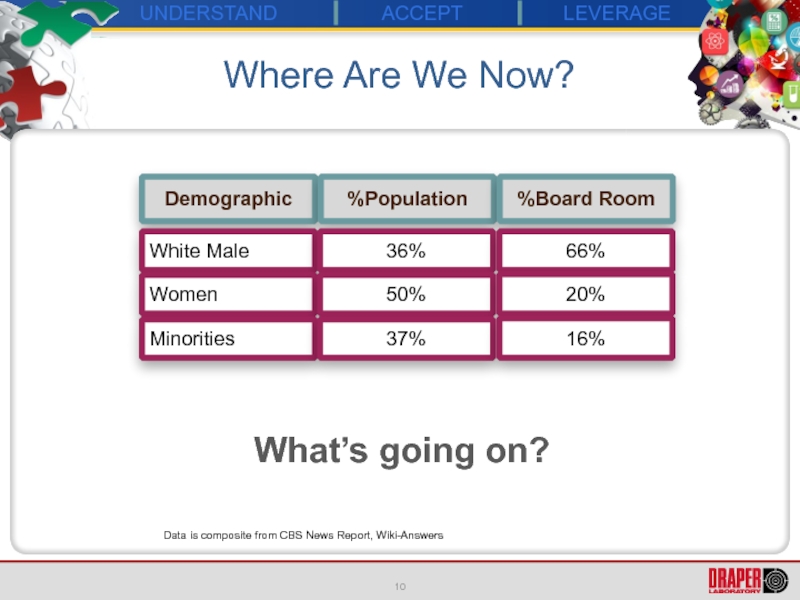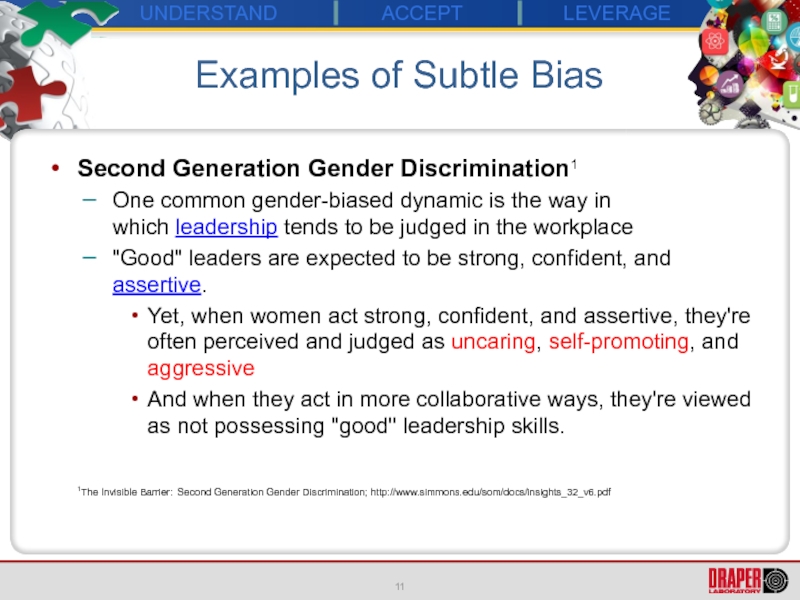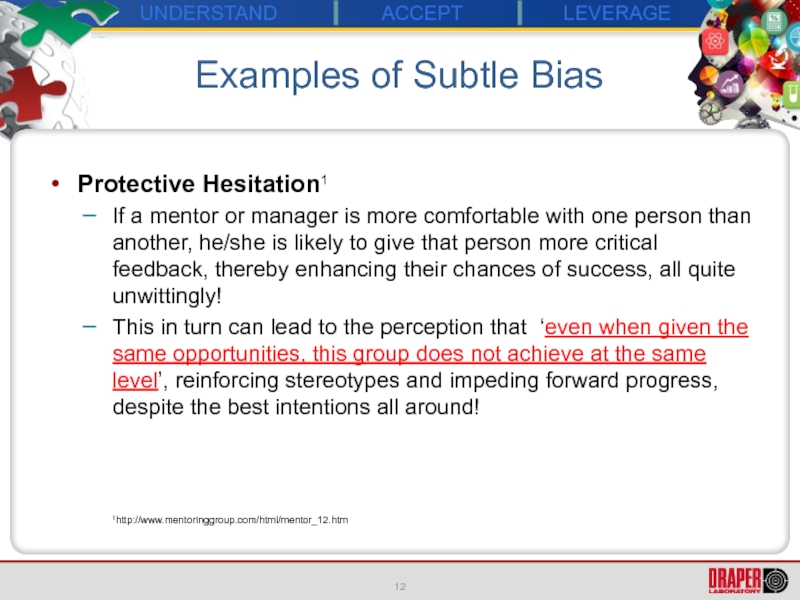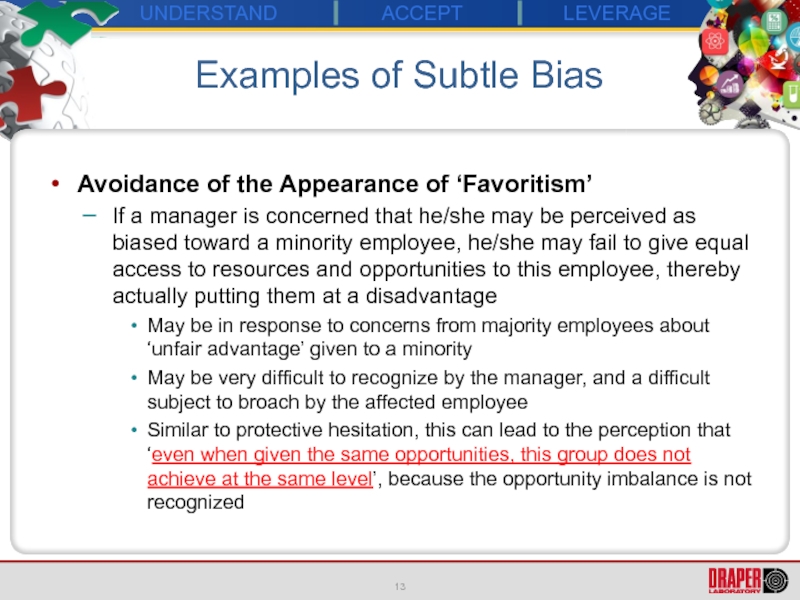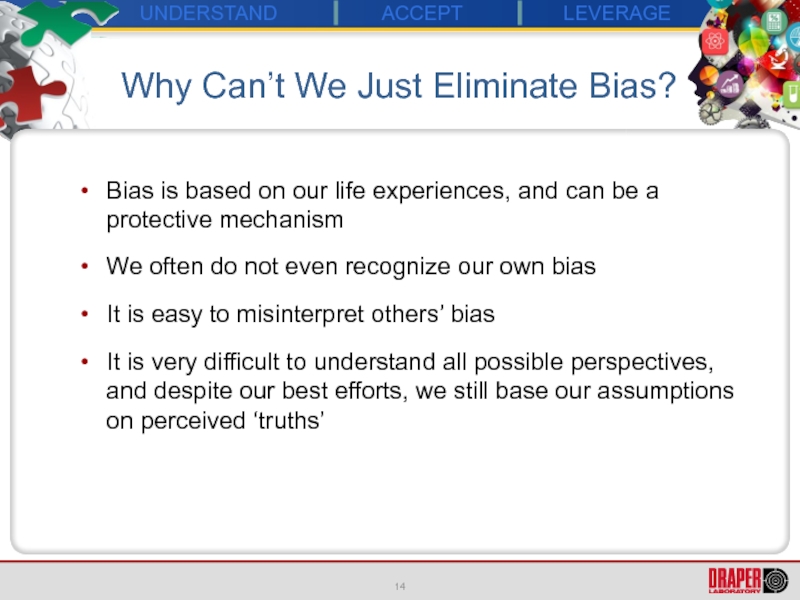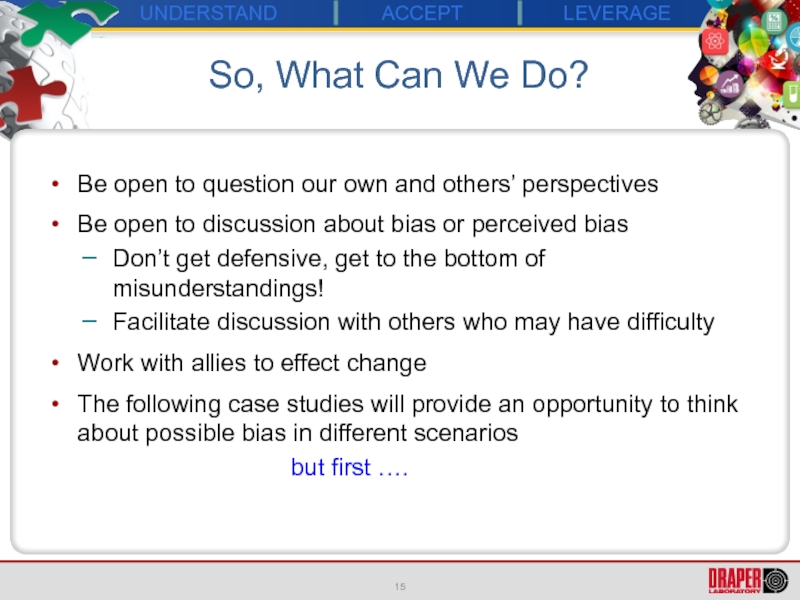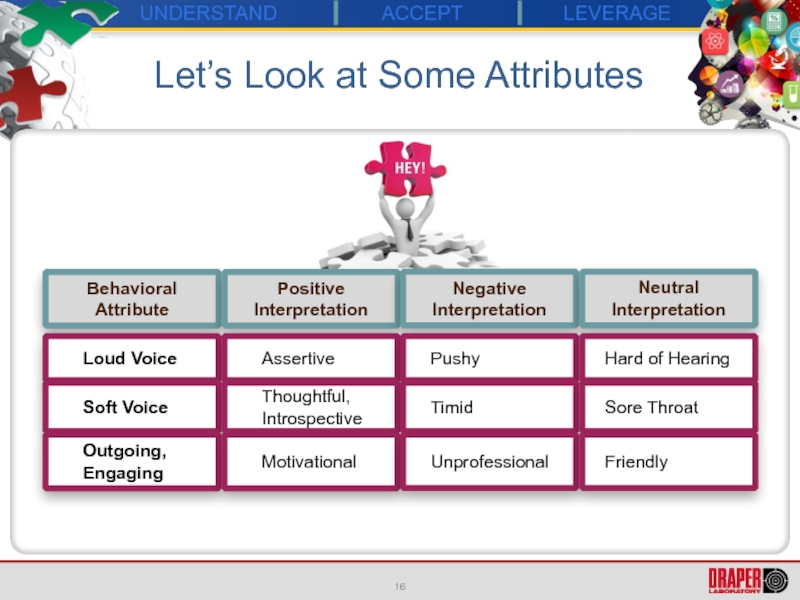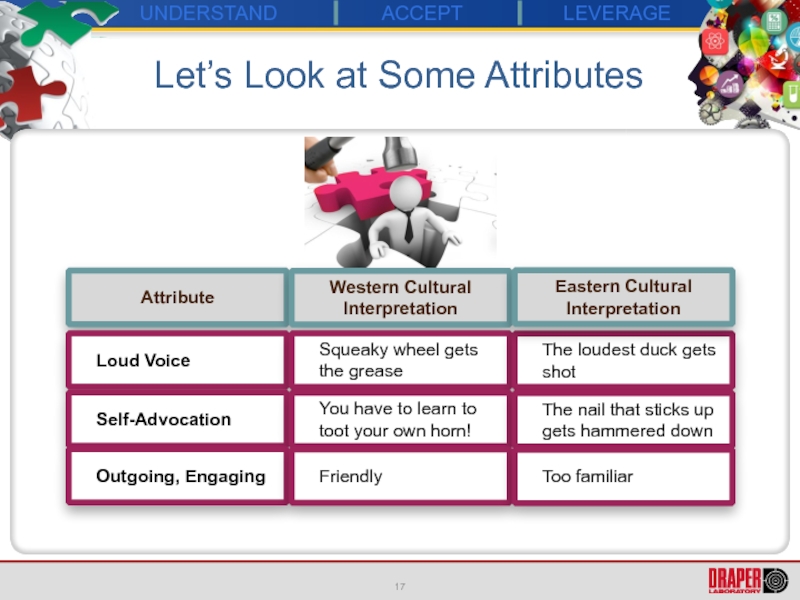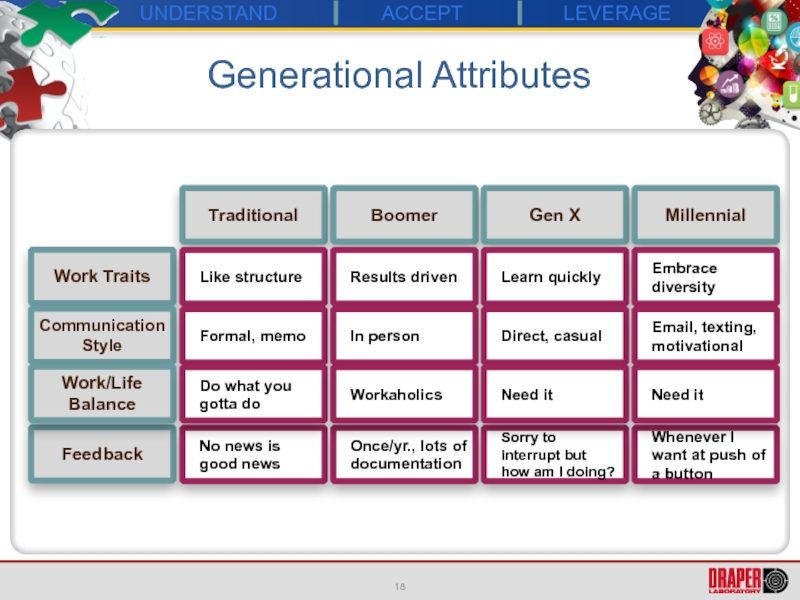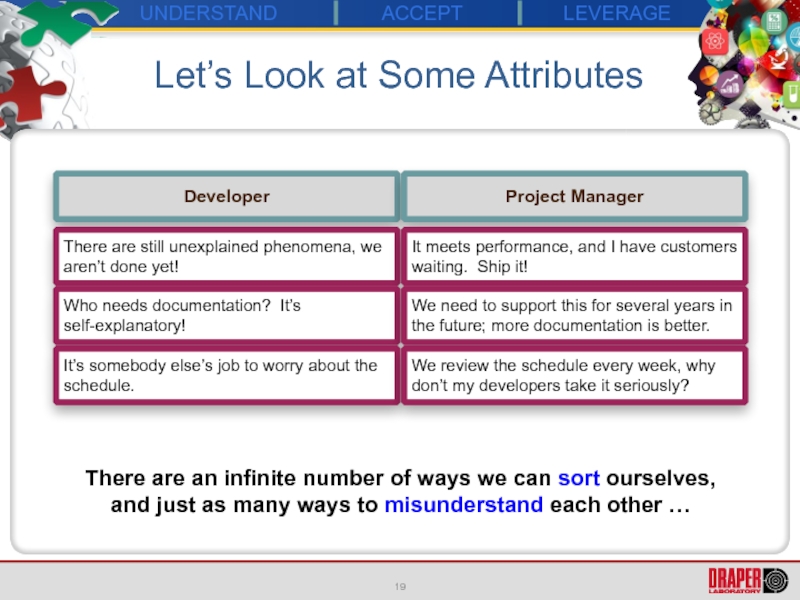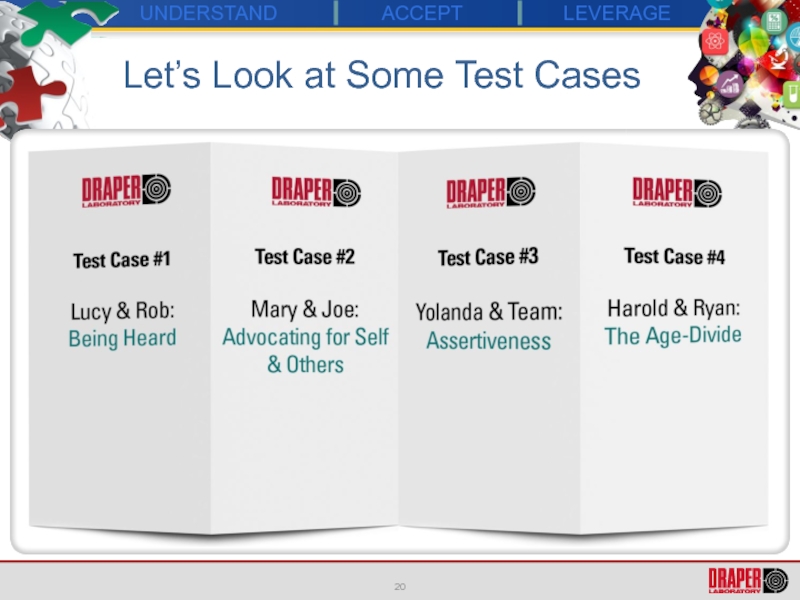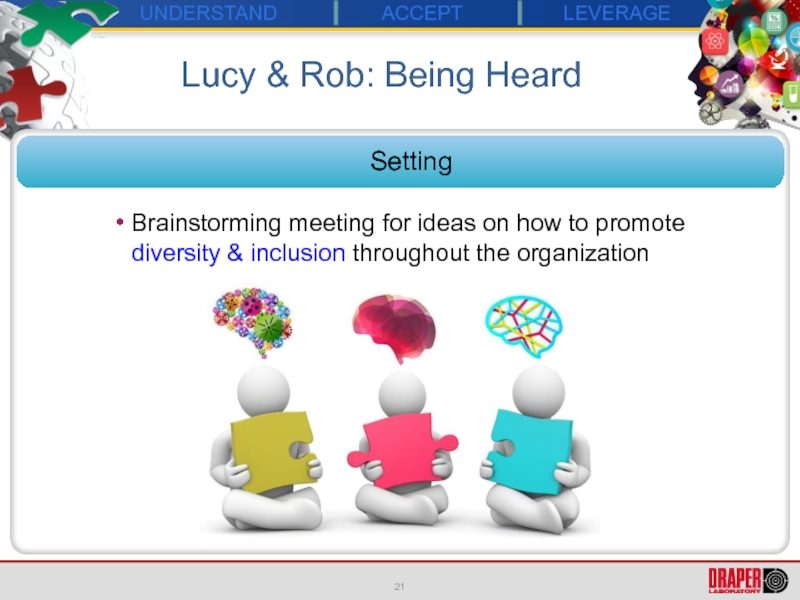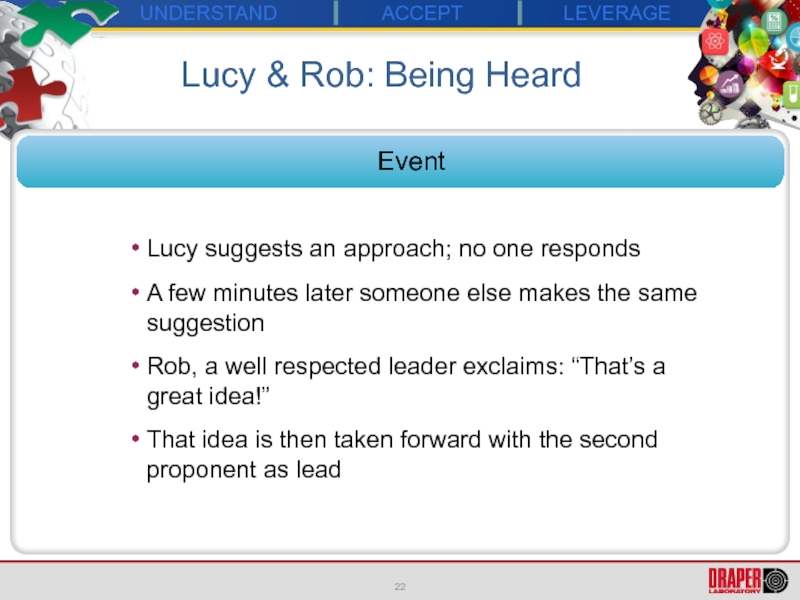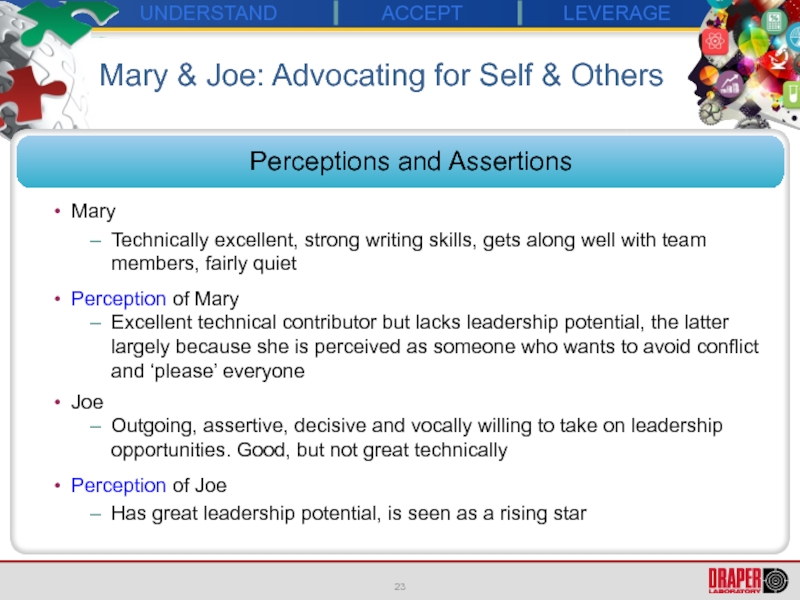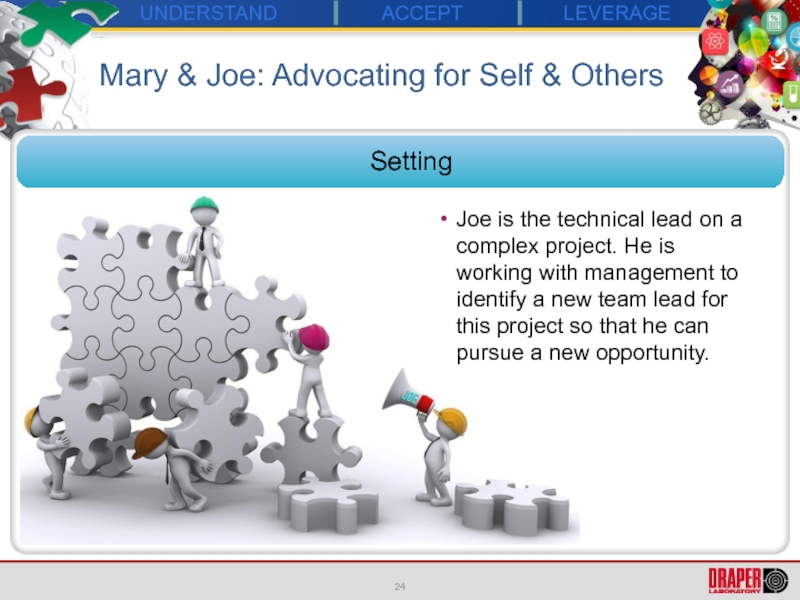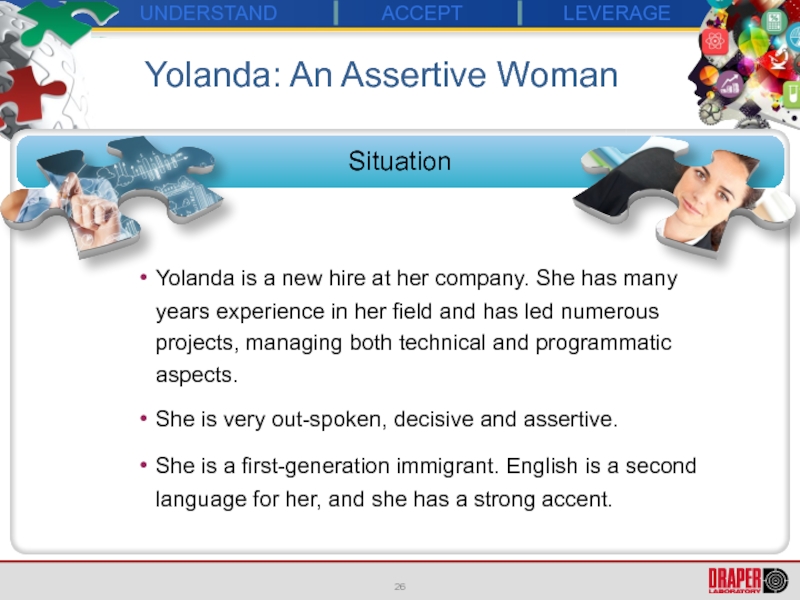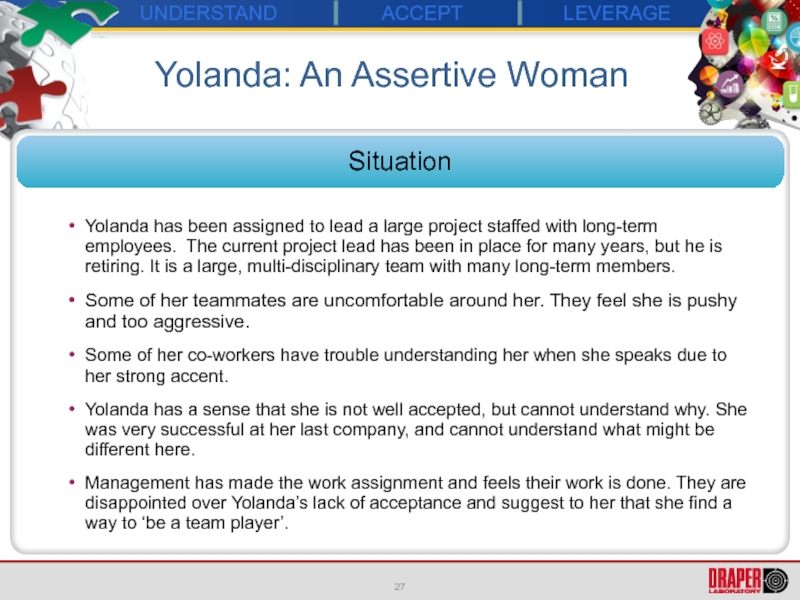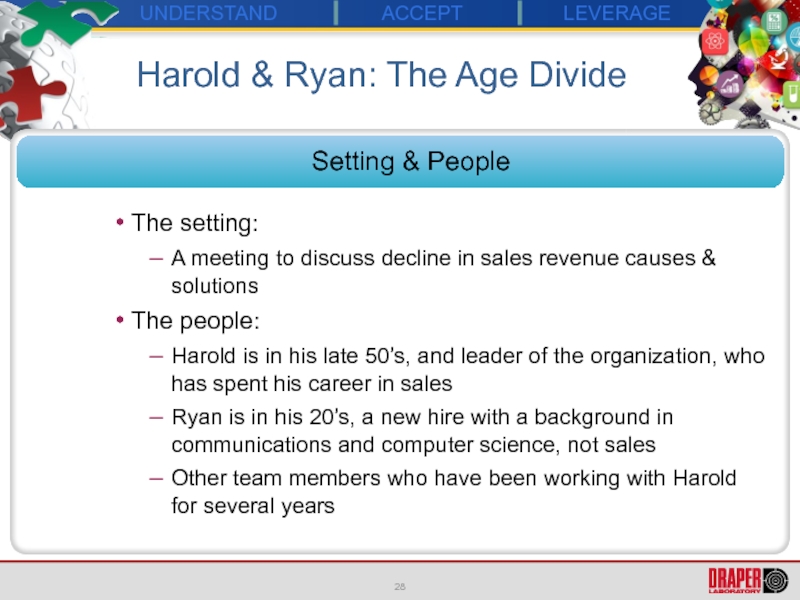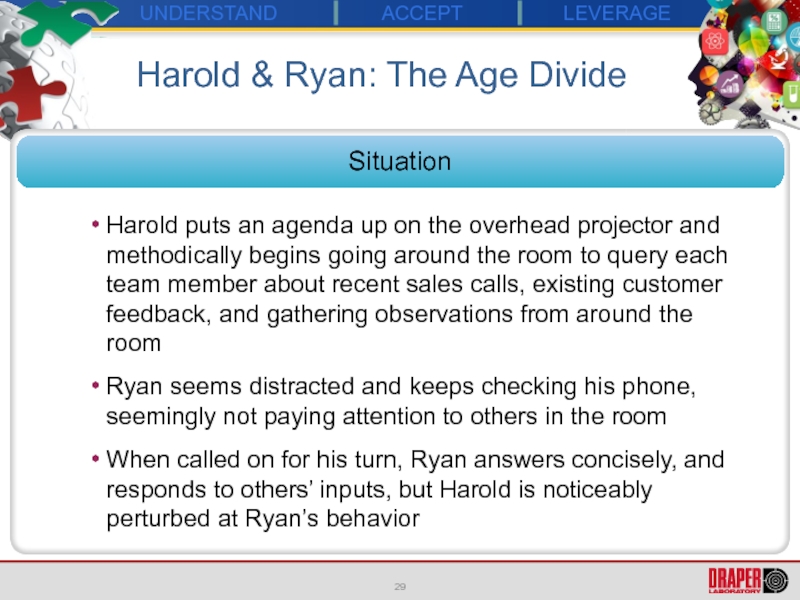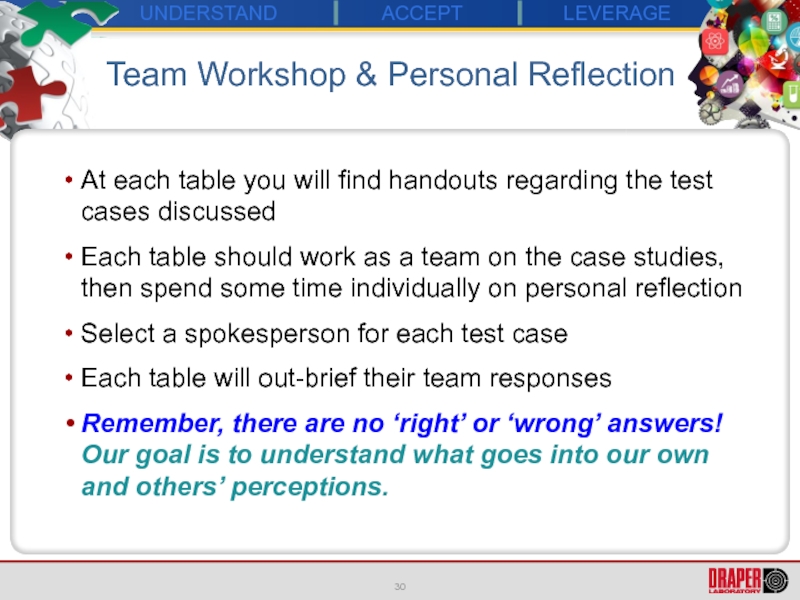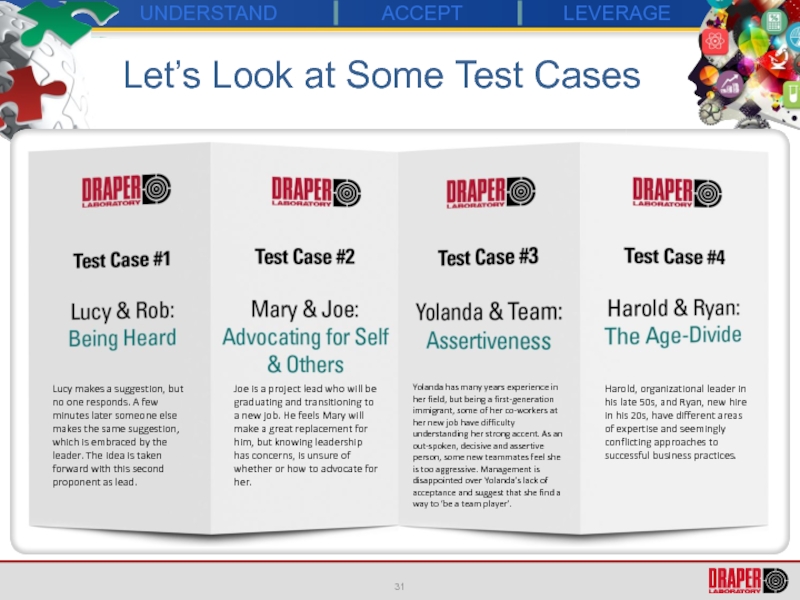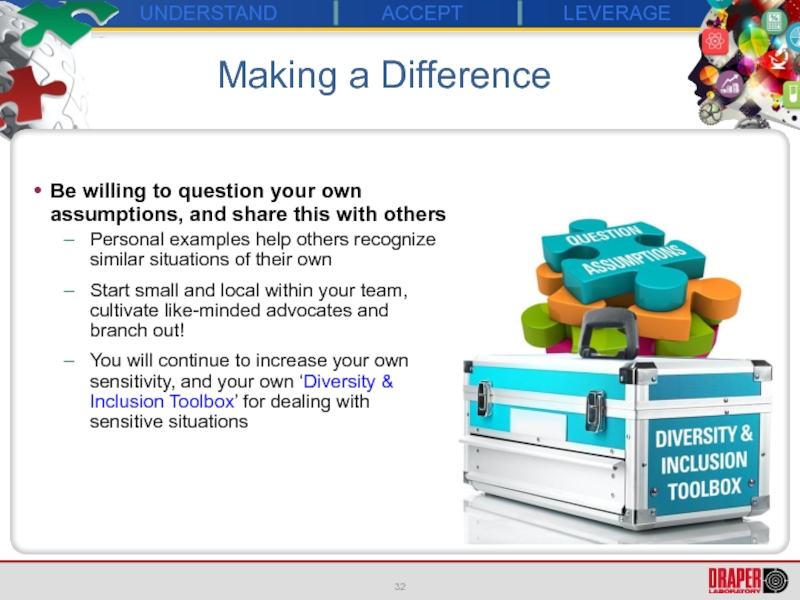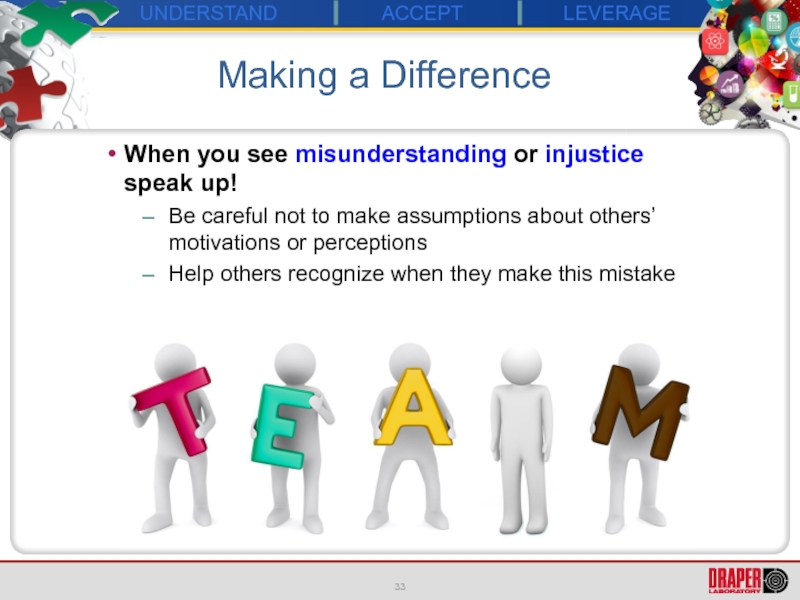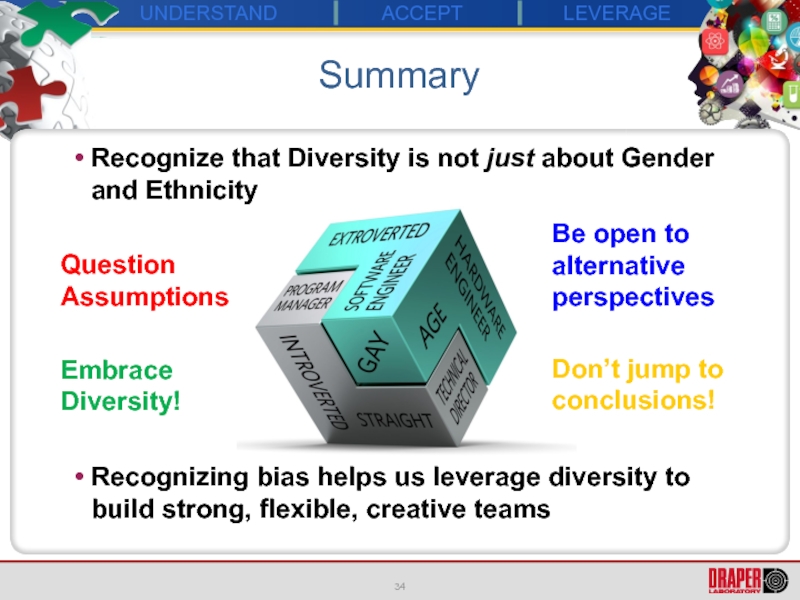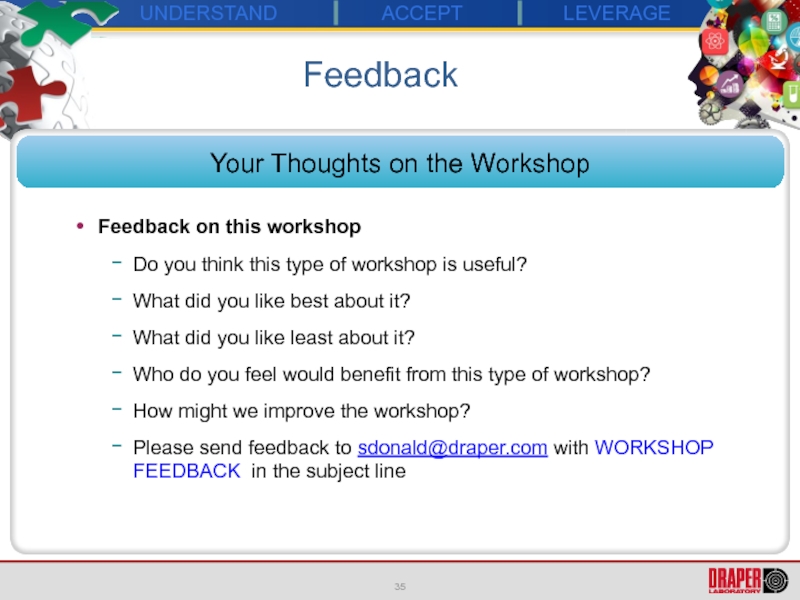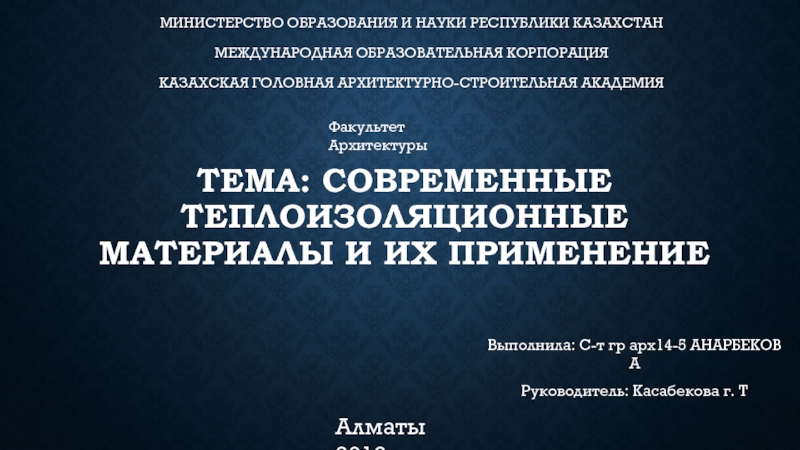- Главная
- Разное
- Дизайн
- Бизнес и предпринимательство
- Аналитика
- Образование
- Развлечения
- Красота и здоровье
- Финансы
- Государство
- Путешествия
- Спорт
- Недвижимость
- Армия
- Графика
- Культурология
- Еда и кулинария
- Лингвистика
- Английский язык
- Астрономия
- Алгебра
- Биология
- География
- Детские презентации
- Информатика
- История
- Литература
- Маркетинг
- Математика
- Медицина
- Менеджмент
- Музыка
- МХК
- Немецкий язык
- ОБЖ
- Обществознание
- Окружающий мир
- Педагогика
- Русский язык
- Технология
- Физика
- Философия
- Химия
- Шаблоны, картинки для презентаций
- Экология
- Экономика
- Юриспруденция
Sharon Donald Associate Director of Strategic Systems презентация
Содержание
- 1. Sharon Donald Associate Director of Strategic Systems
- 2. Objectives of this Presentation Diversity, Inclusion &
- 3. Objectives What can you expect to get
- 4. The Four Layers of Diversity* * Adapted from
- 5. The Four Layers of Diversity* - Self
- 6. Diversity & Inclusion Why Do We Care?
- 7. Why is Diversity Hard? Why is
- 8. What is Inclusion and Why is It
- 16. Let’s Look at Some Attributes Behavioral
- 17. Let’s Look at Some Attributes Attribute
- 18. Generational Attributes Traditional Boomer Gen X Millennial
- 19. Let’s Look at Some Attributes Developer
- 20. Let’s Look at Some Test Cases
- 21. Lucy & Rob: Being Heard Setting
- 22. Lucy & Rob: Being Heard Event
- 23. Mary & Joe: Advocating for Self &
- 24. Mary & Joe: Advocating for Self &
- 25. Mary & Joe: Advocating for Self &
- 26. Yolanda is a new hire at her
- 27. Yolanda has been assigned to lead a
- 28. Harold & Ryan: The Age Divide
- 29. Harold & Ryan: The Age Divide
- 30. Team Workshop & Personal Reflection At each
- 31. Let’s Look at Some Test Cases
- 32. Making a Difference Be willing to question
- 33. Making a Difference When you see misunderstanding
- 34. Summary Recognize
- 35. Feedback Your Thoughts on the Workshop
Слайд 2Objectives of this Presentation
Diversity, Inclusion & Bias
Test Cases, Team Activities
Making
Wrap Up and Questions
Outline
Слайд 3Objectives
What can you expect to get out of this presentation?
Insight:
Curiosity: on what are people’s perceptions based?; what are your own biases?
Determination: to be open to alternative perceptions
Beginning toolkit: recognizing and overcoming bias in yourself and others
What benefits can you expect by understanding how bias can affect the workplace?
Better team leadership skills
Ability to work effectively with diverse teams
Mutual respect of co-workers
Слайд 4The Four Layers of Diversity*
* Adapted from Marilyn Loden and Julie Rosener,
“Workforce
Слайд 5The Four Layers of Diversity* - Self
Conflict-handling Mode
Competing
Collaborating
Compromising
Avoiding
Accommodating
MBTI Type
Extroversion/Introversion
Sensing/Intuition
Thinking/Feeling
Judging/Perceiving
Learning Styles
By doing?
By
By listening?
Communication Style
Think before speaking?
Think while speaking?
Comfortable with interruptions?
* Adapted from Marilyn Loden and Julie Rosener,
“Workforce America!” (Business One Irwin, 1991)
Слайд 6Diversity & Inclusion
Why Do We Care?
Why is Diversity important and
A diverse workforce provides the best opportunity for innovation and the flexibility required to overcome complex challenges
Inclusion is important because it helps us get the most out of our diverse resources
Слайд 7Why is Diversity Hard? Why is It Important to Understand Bias?
While diversity of thought & experience provide valuable insights which we can leverage as a team,
Differences can also cause Anxiety, Misunderstanding and Lack of Trust
Recognizing our own and others’ biases can help us understand team dynamics, effectively address issues, and ultimately achieve our goals by building strong teams
Слайд 8What is Inclusion
and Why is It Important?
Inclusion is the process by
We do this by recognizing and leveraging our differences rather than seeking to minimize or ignore them.
Слайд 10
Where Are We Now?
What’s going on?
Demographic
%Population
%Board Room
White Male
36%
66%
Women
50%
20%
Minorities
37%
16%
Data is
Слайд 11
Examples of Subtle Bias
Second Generation Gender Discrimination1
One common gender-biased dynamic is the way
"Good" leaders are expected to be strong, confident, and assertive.
Yet, when women act strong, confident, and assertive, they're often perceived and judged as uncaring, self-promoting, and aggressive
And when they act in more collaborative ways, they're viewed as not possessing "good" leadership skills.
1The Invisible Barrier: Second Generation Gender Discrimination; http://www.simmons.edu/som/docs/insights_32_v6.pdf
Слайд 12
Examples of Subtle Bias
Protective Hesitation1
If a mentor or manager is more
This in turn can lead to the perception that ‘even when given the same opportunities, this group does not achieve at the same level’, reinforcing stereotypes and impeding forward progress, despite the best intentions all around!
1http://www.mentoringgroup.com/html/mentor_12.htm
Слайд 13
Examples of Subtle Bias
Avoidance of the Appearance of ‘Favoritism’
If a manager
May be in response to concerns from majority employees about ‘unfair advantage’ given to a minority
May be very difficult to recognize by the manager, and a difficult subject to broach by the affected employee
Similar to protective hesitation, this can lead to the perception that ‘even when given the same opportunities, this group does not achieve at the same level’, because the opportunity imbalance is not recognized
Слайд 14
Why Can’t We Just Eliminate Bias?
Bias is based on our life
We often do not even recognize our own bias
It is easy to misinterpret others’ bias
It is very difficult to understand all possible perspectives, and despite our best efforts, we still base our assumptions on perceived ‘truths’
Слайд 15
So, What Can We Do?
Be open to question our own
Be open to discussion about bias or perceived bias
Don’t get defensive, get to the bottom of misunderstandings!
Facilitate discussion with others who may have difficulty
Work with allies to effect change
The following case studies will provide an opportunity to think about possible bias in different scenarios
but first ….
Слайд 16Let’s Look at Some Attributes
Behavioral
Attribute
Positive
Interpretation
Negative
Interpretation
Neutral
Interpretation
Loud Voice
Assertive
Pushy
Hard of Hearing
Soft Voice
Thoughtful, Introspective
Timid
Sore
Outgoing, Engaging
Motivational
Unprofessional
Friendly
Слайд 17Let’s Look at Some Attributes
Attribute
Western Cultural
Interpretation
Loud Voice
Squeaky wheel gets the
The loudest duck gets shot
Self-Advocation
You have to learn to toot your own horn!
The nail that sticks up gets hammered down
Outgoing, Engaging
Friendly
Too familiar
Eastern Cultural
Interpretation
Слайд 19Let’s Look at Some Attributes
Developer
Project Manager
There are still unexplained phenomena,
It meets performance, and I have customers waiting. Ship it!
Who needs documentation? It’s self-explanatory!
We need to support this for several years in the future; more documentation is better.
It’s somebody else’s job to worry about the schedule.
We review the schedule every week, why don’t my developers take it seriously?
There are an infinite number of ways we can sort ourselves, and just as many ways to misunderstand each other …
Слайд 21Lucy & Rob: Being Heard
Setting
Brainstorming meeting for ideas on how to
Слайд 22Lucy & Rob: Being Heard
Event
Lucy suggests an approach; no one responds
A
Rob, a well respected leader exclaims: “That’s a great idea!”
That idea is then taken forward with the second proponent as lead
Слайд 23Mary & Joe: Advocating for Self & Others
Perceptions and Assertions
Mary
Technically
Perception of Mary
Excellent technical contributor but lacks leadership potential, the latter largely because she is perceived as someone who wants to avoid conflict and ‘please’ everyone
Joe
Outgoing, assertive, decisive and vocally willing to take on leadership opportunities. Good, but not great technically
Perception of Joe
Has great leadership potential, is seen as a rising star
Слайд 24Mary & Joe: Advocating for Self & Others
Setting
Joe is the
Слайд 25Mary & Joe: Advocating for Self & Others
Situation
Joe feels that
Mary feels she is the obvious choice, but also feels it’s management’s job to recognize it, and that if they don’t, perhaps they recognize something lacking in her that she does not see.
Management is very worried; they want to give Joe this new opportunity, but don’t want to risk the current project.
Слайд 26Yolanda is a new hire at her company. She has many
She is very out-spoken, decisive and assertive.
She is a first-generation immigrant. English is a second language for her, and she has a strong accent.
Yolanda: An Assertive Woman
Situation
Слайд 27Yolanda has been assigned to lead a large project staffed with
Some of her teammates are uncomfortable around her. They feel she is pushy and too aggressive.
Some of her co-workers have trouble understanding her when she speaks due to her strong accent.
Yolanda has a sense that she is not well accepted, but cannot understand why. She was very successful at her last company, and cannot understand what might be different here.
Management has made the work assignment and feels their work is done. They are disappointed over Yolanda’s lack of acceptance and suggest to her that she find a way to ‘be a team player’.
Yolanda: An Assertive Woman
Situation
Слайд 28Harold & Ryan: The Age Divide
Setting & People
The setting:
A meeting to
The people:
Harold is in his late 50’s, and leader of the organization, who has spent his career in sales
Ryan is in his 20’s, a new hire with a background in communications and computer science, not sales
Other team members who have been working with Harold for several years
Слайд 29Harold & Ryan: The Age Divide
Situation
Harold puts an agenda up on
Ryan seems distracted and keeps checking his phone, seemingly not paying attention to others in the room
When called on for his turn, Ryan answers concisely, and responds to others’ inputs, but Harold is noticeably perturbed at Ryan’s behavior
Слайд 30Team Workshop & Personal Reflection
At each table you will find handouts
Each table should work as a team on the case studies, then spend some time individually on personal reflection
Select a spokesperson for each test case
Each table will out-brief their team responses
Remember, there are no ‘right’ or ‘wrong’ answers! Our goal is to understand what goes into our own and others’ perceptions.
Слайд 31Let’s Look at Some Test Cases
Lucy makes a suggestion, but
Joe is a project lead who will be graduating and transitioning to a new job. He feels Mary will make a great replacement for him, but knowing leadership has concerns, is unsure of whether or how to advocate for her.
Yolanda has many years experience in her field, but being a first-generation immigrant, some of her co-workers at her new job have difficulty understanding her strong accent. As an out-spoken, decisive and assertive person, some new teammates feel she is too aggressive. Management is disappointed over Yolanda’s lack of acceptance and suggest that she find a way to ‘be a team player’.
Harold, organizational leader in his late 50s, and Ryan, new hire in his 20s, have different areas of expertise and seemingly conflicting approaches to successful business practices.
Слайд 32Making a Difference
Be willing to question your own assumptions, and share
Personal examples help others recognize similar situations of their own
Start small and local within your team, cultivate like-minded advocates and branch out!
You will continue to increase your own sensitivity, and your own ‘Diversity & Inclusion Toolbox’ for dealing with sensitive situations
Слайд 33Making a Difference
When you see misunderstanding or injustice speak up!
Be
Help others recognize when they make this mistake
Слайд 34
Summary
Recognize that Diversity is not just about Gender and Ethnicity
Question
Embrace Diversity!
Don’t jump to conclusions!
Recognizing bias helps us leverage diversity to build strong, flexible, creative teams
Be open to alternative perspectives
Слайд 35Feedback
Your Thoughts on the Workshop
Feedback on this workshop
Do you think
What did you like best about it?
What did you like least about it?
Who do you feel would benefit from this type of workshop?
How might we improve the workshop?
Please send feedback to sdonald@draper.com with WORKSHOP FEEDBACK in the subject line
